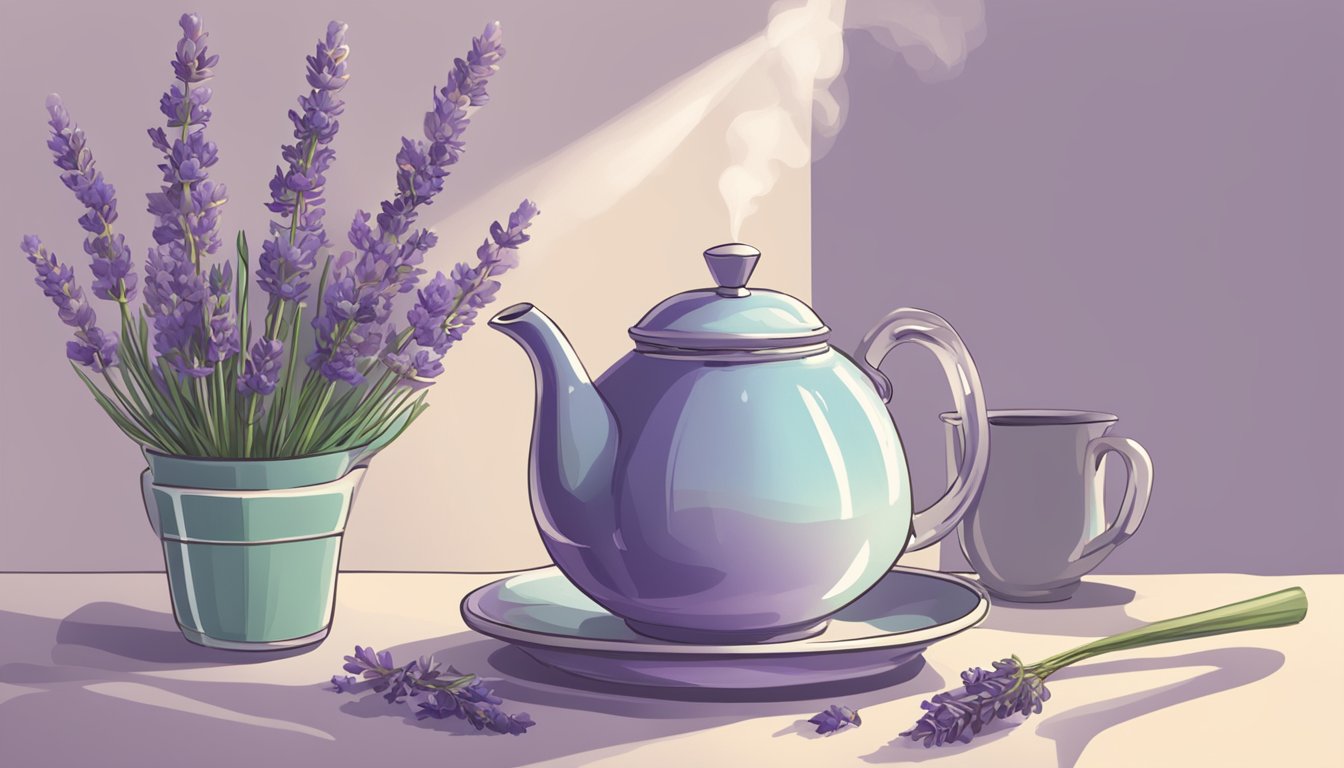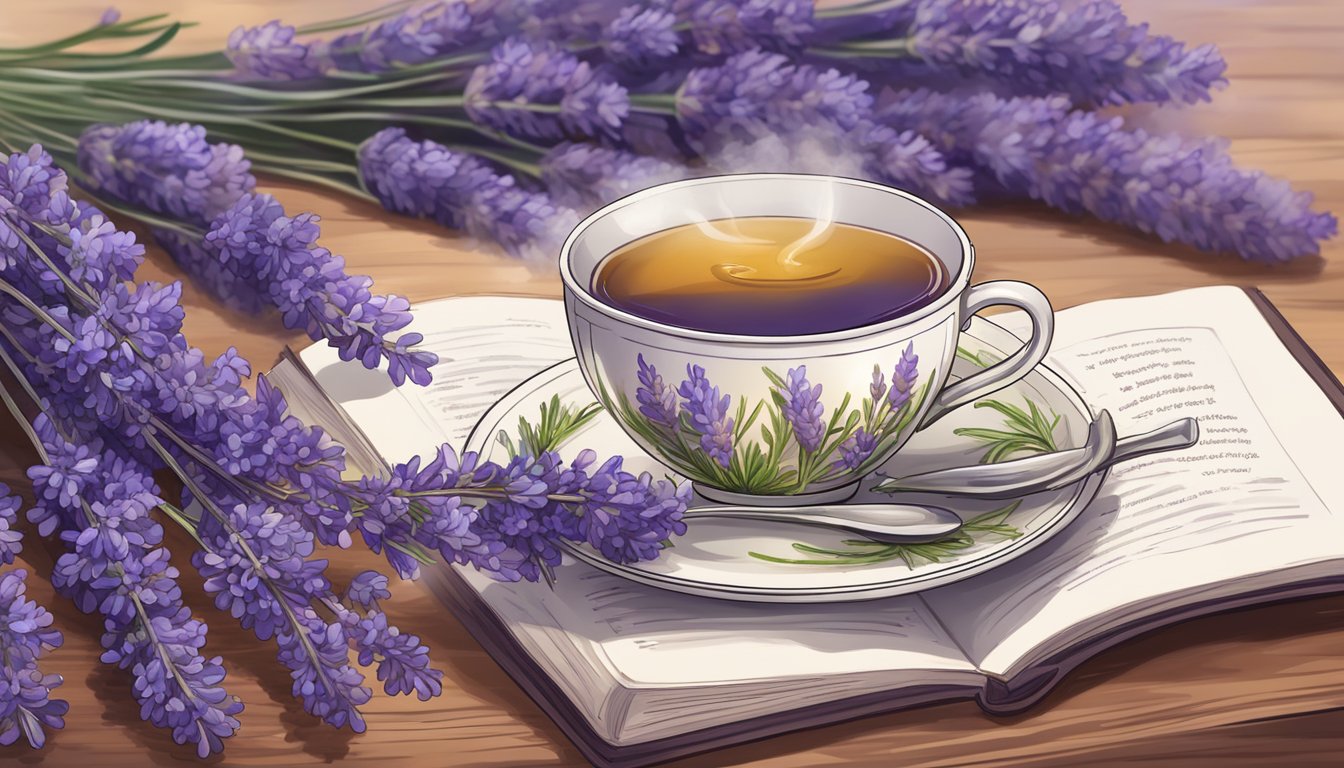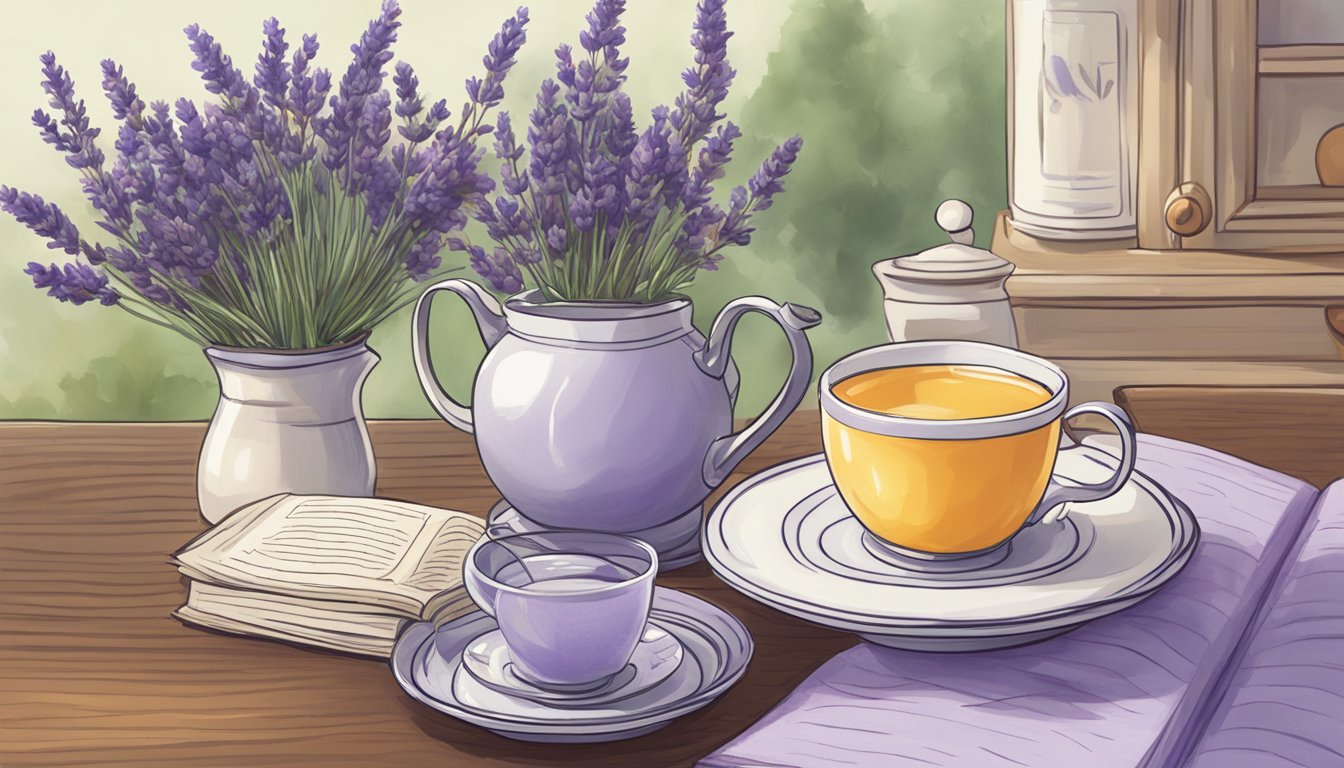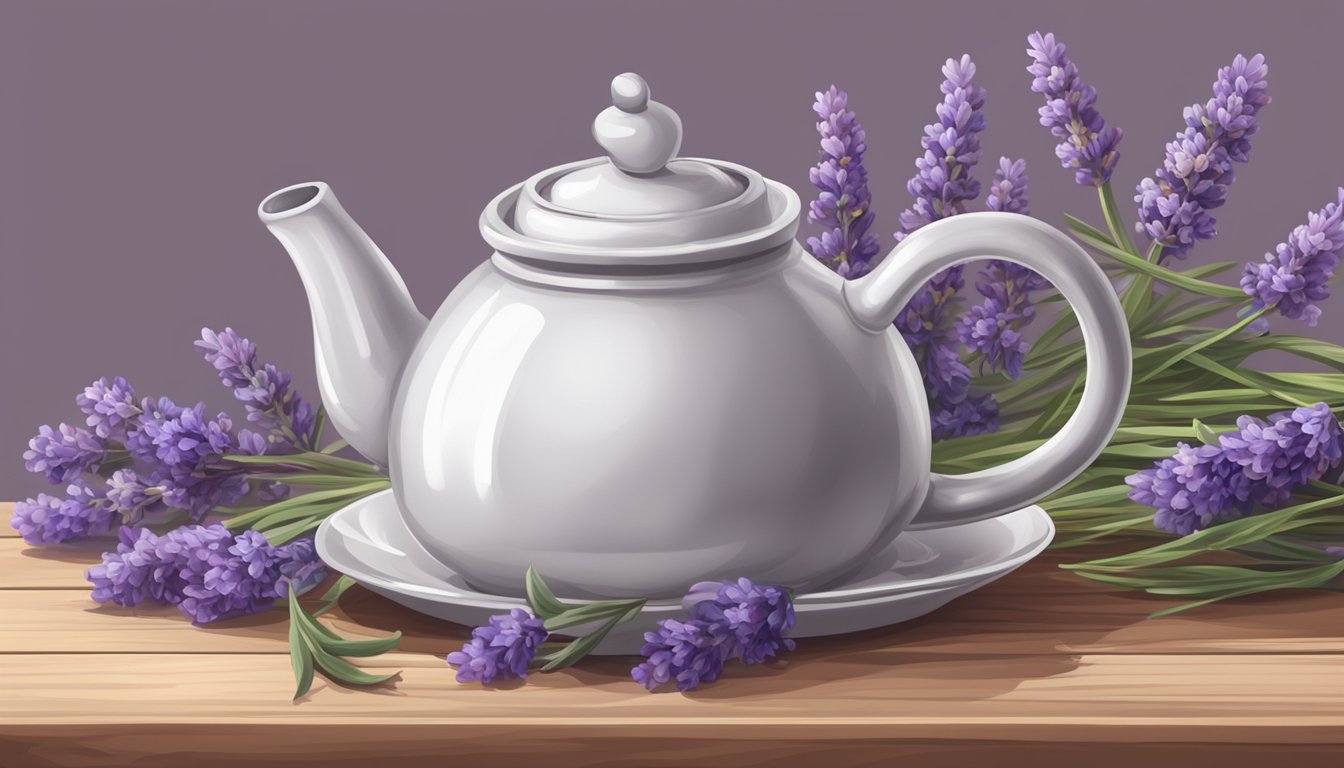Recipe for Lavender Tea is a calming and relaxing herbal tea enjoyed for centuries. It’s made by steeping fresh or dried lavender buds in hot water. Lavender tea is known for its unique flavor and aroma, as well as its many health benefits.
Lavender is a fragrant herb that is commonly used in aromatherapy and natural medicine. It has been shown to have a calming effect on the mind and body, making it an ideal ingredient for a soothing and relaxing tea. Lavender tea is also rich in antioxidants, which help to protect the body against free radical damage and reduce inflammation. Additionally, it has been shown to have anti-anxiety and sleep-promoting effects, making it a popular choice for those who struggle with stress and insomnia.
Benefits of Lavender Tea
Lavender tea is a delicious and soothing beverage that offers a number of health benefits. Here are some of the benefits of lavender tea:
Promotes Relaxation
Lavender tea is well-known for its calming and soothing effects on the mind and body. It can help reduce anxiety and stress, and promote relaxation. The tea contains compounds that have sedative effects, making it an ideal bedtime tea. Drinking a cup of lavender tea before bed can help you relax and get a restful sleep.
Helps with Sleep
Lavender tea is a natural sleep aid that can help you fall asleep faster and stay asleep longer. It has a calming effect on the nervous system, which can help you relax and unwind before bed. Drinking a cup of lavender tea before bed can help you get a better night’s sleep and wake up feeling refreshed and energized.
Reduces Menstrual Pain
Lavender tea has anti-inflammatory properties that can help reduce menstrual pain and cramping. It can also help regulate menstrual cycles and reduce other symptoms associated with menstruation, such as mood swings and bloating.
Contains Antioxidants
Lavender tea is rich in antioxidants, which can help boost your immune system and protect your body from damage caused by free radicals. Antioxidants can also help reduce inflammation in the body, which can lead to a number of health problems.
Overall, lavender tea is a delicious and healthy beverage that offers a number of benefits for both the mind and body. Drinking a cup of lavender tea regularly can help promote relaxation, reduce stress and anxiety, improve sleep quality, reduce menstrual pain, and boost your immune system.
How to Make Lavender Tea

Step-by-Step Instructions
Making lavender tea is a simple and relaxing process. Here is a step-by-step guide to making lavender tea:
- Boil water in a pot, tea kettle, or saucepan.
- While the water is boiling, prepare your lavender. You can use fresh or dried lavender buds. If using fresh lavender, rinse and dry the buds before use.
- Add 2-3 teaspoons of lavender buds to a tea ball, tea infuser, or tea bag. Place the tea ball/infuser/bag in a cup.
- Pour the boiling water over the tea ball/infuser/bag and let steep for 5-10 minutes.
- Remove the tea ball/infuser/bag and add a sweetener of your choice, such as honey or maple syrup, if desired.
- Enjoy your delicious and calming lavender tea!
Ingredient Notes
The key ingredient in lavender tea is, of course, lavender. The most common type of lavender used in tea is Lavandula angustifolia, also known as English lavender. You can use either fresh or dried lavender buds, depending on what is available to you.
Other ingredients that can be added to lavender tea include lemon, mint, and chamomile. These ingredients can add a refreshing and unique flavor to your tea.
If you are vegan or gluten-free, be sure to use vegan-friendly sweeteners and check the labels of any additional ingredients you plan to add to your tea.
Equipment Needed
You will need a few pieces of equipment to make lavender tea:
- A pot, tea kettle, or saucepan to boil water
- A tea ball, tea infuser, or tea bag to hold the lavender buds
- A cup to hold the tea
- A fine mesh strainer (optional)
If you do not have a tea ball, infuser, or bag, you can also make lavender tea by simply adding the lavender buds directly to the boiling water and straining the tea before drinking.
Overall, making lavender tea is a simple and enjoyable process that can provide a sense of relaxation and calm.
Creative Lavender Tea Recipes

If you are looking for creative ways to enjoy homemade lavender tea, there are many delicious recipes to try. Here are three of my favorite lavender tea recipes that incorporate other herbs and fruits for a unique and refreshing twist.
Lavender Mint Tea
For a refreshing and soothing tea, try blending fresh or dried lavender with mint leaves. Mint is known for its digestive properties and can help soothe an upset stomach. To make this tea, steep 1 tablespoon of dried lavender and 1 tablespoon of fresh mint leaves in 2 cups of hot water for 5-7 minutes. Strain and enjoy with a touch of honey if desired.
Lavender Chamomile Tea
Lavender and chamomile are both known for their calming properties, making this tea perfect for relaxing after a long day. To make this tea, mix 1 tablespoon of dried lavender and 1 tablespoon of dried chamomile in a tea infuser or tea bag. Steep in 2 cups of hot water for 5-7 minutes. Strain and enjoy with a drizzle of honey for added sweetness.
Lavender Berry Iced Tea
For a refreshing and fruity twist on lavender tea, try this iced tea recipe. Steep 1 tablespoon of dried lavender in 2 cups of hot water for 5-7 minutes. In a separate pot, bring 2 cups of water and 1 cup of mixed berries (such as raspberries, blueberries, and strawberries) to a boil. Reduce heat and simmer for 10 minutes. Strain the berry mixture into the lavender tea and let cool. Serve over ice for a refreshing summer drink.
These lavender tea blends are easy to make at home and can be enjoyed hot or cold. Experiment with different herbs and fruits to create your own unique lavender tea recipes.
Conclusion

In conclusion, lavender tea is a delicious and healthy beverage that can be enjoyed at any time of the day. Not only does it have a pleasant aroma and taste, but it also offers several health benefits.
Lavender tea is known for its calming and relaxing properties, making it an excellent choice for those looking to unwind after a long day. It can also help alleviate anxiety and promote better sleep.
Moreover, lavender tea is rich in antioxidants, which can help protect the body against free radicals and reduce the risk of chronic diseases. It is also believed to have anti-inflammatory properties that can help reduce inflammation and pain in the body.
To make lavender tea, simply boil water and add fresh or dried lavender buds to a tea ball or sachet. Let it steep for 10 minutes and enjoy! You can also add other herbs or sweeteners to enhance the flavor.
Overall, incorporating lavender tea into your daily routine can be a simple and effective way to promote relaxation and improve your overall health and well-being.
Recipe for Lavender Tea and theherbprof.com: A Relaxing Rendezvous
When you’re seeking a moment of calm in your day, a Recipe for Lavender Tea is your tranquil retreat. It’s like a serene sunset, infusing the calming essence of lavender into a soothing brew. Need a stress-busting drink? Recipe for Lavender Tea. Looking for a sleep aid? Recipe for Lavender Tea. Want a floral delight? You’ve got it, it’s Recipe for Lavender Tea!
Now, let’s talk about theherbprof.com. It’s your digital tea house, the portal that opens up a world of calming brews. It’s packed with information about the Recipe for Lavender Tea and how to brew it to perfection. Check our home page here!
Here’s the beautiful part: Recipe for Lavender Tea and theherbprof.com are a dream team. The recipe provides the calming brew, and the website provides the practical know-how to steep that brew. It’s a match made in tea heaven!
So, the next time you’re in the mood for a calming cuppa, remember this dynamic duo. Visit theherbprof.com, whip up that Recipe for Lavender Tea, and sip your way to tranquility! Let the tea time begin!
References – Recipe for Lavender Tea
Little Herb Encyclopedia, by Jack Ritchason; N.D., Woodland Publishing Incorporated, 1995
The Ultimate Healing System, Course Manual, Copyright 1985, Don Lepore
Planetary Herbology, Michael Tierra, C.A., N.D., Lotus Press, 1988
Handbook of Medicinal Herbs, by James A. Duke, Pub. CRP Second Edition 2007
The Complete Medicinal Herbal, by Penelope Ody, Published by Dorling Kindersley
Check the Following Articles!
Dandelion Root Tea Recipe: A Simple to Boost Your Health
Herbal Mint Tea Recipe: A Refreshing Beverage
Butterfly Pea Flower Recipe: A Colorful Drink
Frequently Asked Questions – Recipe for Lavender Tea

How do you prepare lavender for tea?
To prepare lavender tea, you can use either fresh or dried lavender flowers. If using fresh lavender, make sure to rinse it thoroughly and remove any dirt or debris. If using dried lavender, you can either use a tea ball or sachet to contain the flowers or simply add them directly to the water.
Can I make tea from lavender leaves?
While lavender leaves are technically edible, they are not commonly used for making tea. Lavender tea is typically made using the flowers of the plant, which have a more delicate flavor and aroma.
What does lavender tea taste like?
Lavender tea has a gentle, floral flavor with subtle herbal notes. It is often described as soothing and calming, making it a popular choice for relaxation and stress relief.
How long to steep lavender tea?
To steep lavender tea, bring water to a boil and pour it over the lavender flowers. Let the tea steep for about 5-10 minutes, depending on how strong you like your tea. Be careful not to oversteep the tea, as this can result in a bitter taste.
Why is lavender tea good for you?
Lavender tea is known for its calming and relaxing properties, making it a popular choice for stress relief and anxiety reduction. It may also have other health benefits, such as improving digestion and respiratory health, as well as acting as a natural sleep aid.
What is the best type of lavender for tea?
English lavender (Lavandula angustifolia) is often considered the best type of lavender for making tea, as it has a sweeter and more delicate flavor than other varieties. However, all types of lavender are technically edible and can be used for making tea.

